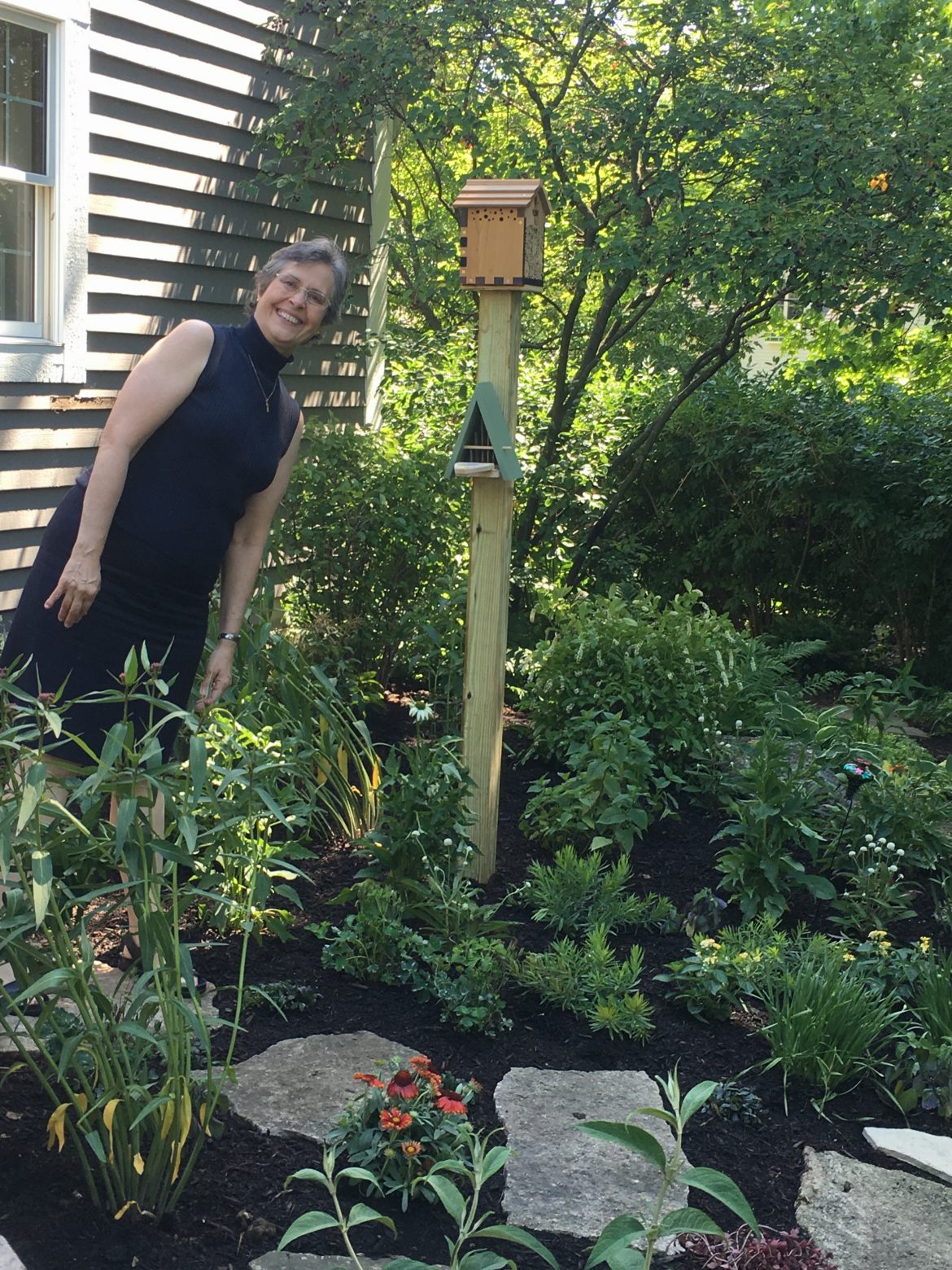
A Pollinator Garden Takes Root

A Pollinator Garden Takes Root
By: claycormany in Outdoors
Over the years of our marriage, my wife has become increasingly environmentally conscious. She picks up discarded trash on sidewalks, recycles any item that can be recycled, and rails against people who dump plastic into oceans, rivers, and other bodies of water. Her biggest step on behalf of the environment came just a few weeks ago when she had a pollinator garden planted in the backyard behind the garage. (The garden took the place of a seldom-used hot tub that had started leaking.) I recently sat down with Becky and asked her some questions about her new initiative to make our planet cleaner and healthier.
Clay: What exactly is a pollinator garden?
Becky: A pollinator garden is a garden that is planted with native species that provide nourishment to pollinators of all types. That could be bees as well as butterflies.
Clay: Where did you get the idea to build your own pollinator garden?
Becky: I went on a wonderful family trip to Australia, and we went to the King’s garden, the Royal Botanical Garden in Sydney. They had a very large exhibit on pollinators. I found it to be interesting and also meaningful. Because of climate change and reduction of habitat, we are losing pollinators, and pollinators are critical for food production all over the world.
Clay: What kinds of plants or things specifically do you have in the garden?
Becky: Well, there are a couple that are very much native to Ohio. One is the milkweed; another is the coneflower. Another is the coral bell. All of those are found wild in Ohio and are in the garden. And, of course, we have a very nice butterfly bush.
Clay: And the structure there that kind of looks like a birdhouse from a distance.
Becky: Well, I have actually two houses, if you will. One is a Flow house, which, again, we saw in Australia. There was an exhibit by the nonprofit Flow, and I ordered one when we got back to the States. That is a house for those species of bees that live in a solitary way. Not all bees live in a hive, and make honey and so forth. And I’ve already got some residents in there. There are small pieces of bamboo that are maybe not quite a foot in length. A whole bunch of them and bees can go in and out, and can winter over, depending where you are in the world that would have a winter season. There’s also a butterfly house where a butterfly could winter over and make their chrysalis inside and also get something to drink and something to eat on the patio of it.
Clay: Okay, what does it mean to get your pollinator garden registered?
Becky: There are two different groups that promote gardens of this type. The first is one that promotes monarch butterflies, and you can have your garden be certified as a monarch waystation. If you do that, you get a nice sign for your garden and there’s one very near our home in a nature area across the way that is maintained by the city. Also there’s the Million Pollinator Garden Club, and you again can send in your paperwork and be registered as a pollinator garden. I don’t think you get a sign for that one.
Clay: From which of these are you going to try to get authorization?
Becky: Both of them, of course.
Clay: What kind of maintenance does the garden need?
Becky: Well, right now it needs just basically water to make sure it doesn’t dry out in the summer heat. But because these are native plants, they’re not real fussy. So they will self-seed. We’ve already noticed some of the garden plants have begun to die back, and it’s a natural thing after they bloom. The ones that are more spring-oriented, the columbine would be a good example of that, and we will leave the seed pods on it and then it will self-seed. So right now, there is some open space between plants, but once they begin to self-seed, the garden will all fill in.
Clay: What happens in the winter?
Becky: A lot of the plants will die back, and that’s okay, that’s part of their natural life cycle. We’ll cut some of them down a little bit, but generally speaking, they’ll all die back and come again in the spring. They’re all perennials.
Clay: Who’s going to help you maintain this garden?
Becky: The people who installed it, M.J. Design and Associates, will help maintain it for sure, but my dear husband and I will be charged with day-to-day making sure it’s adequately watered. It’s mid-summer and it can dry out pretty quick.
Clay: Thank you, my dear.
Tags: bees, butterflies, Flow house, garden, perennials, pollinator
